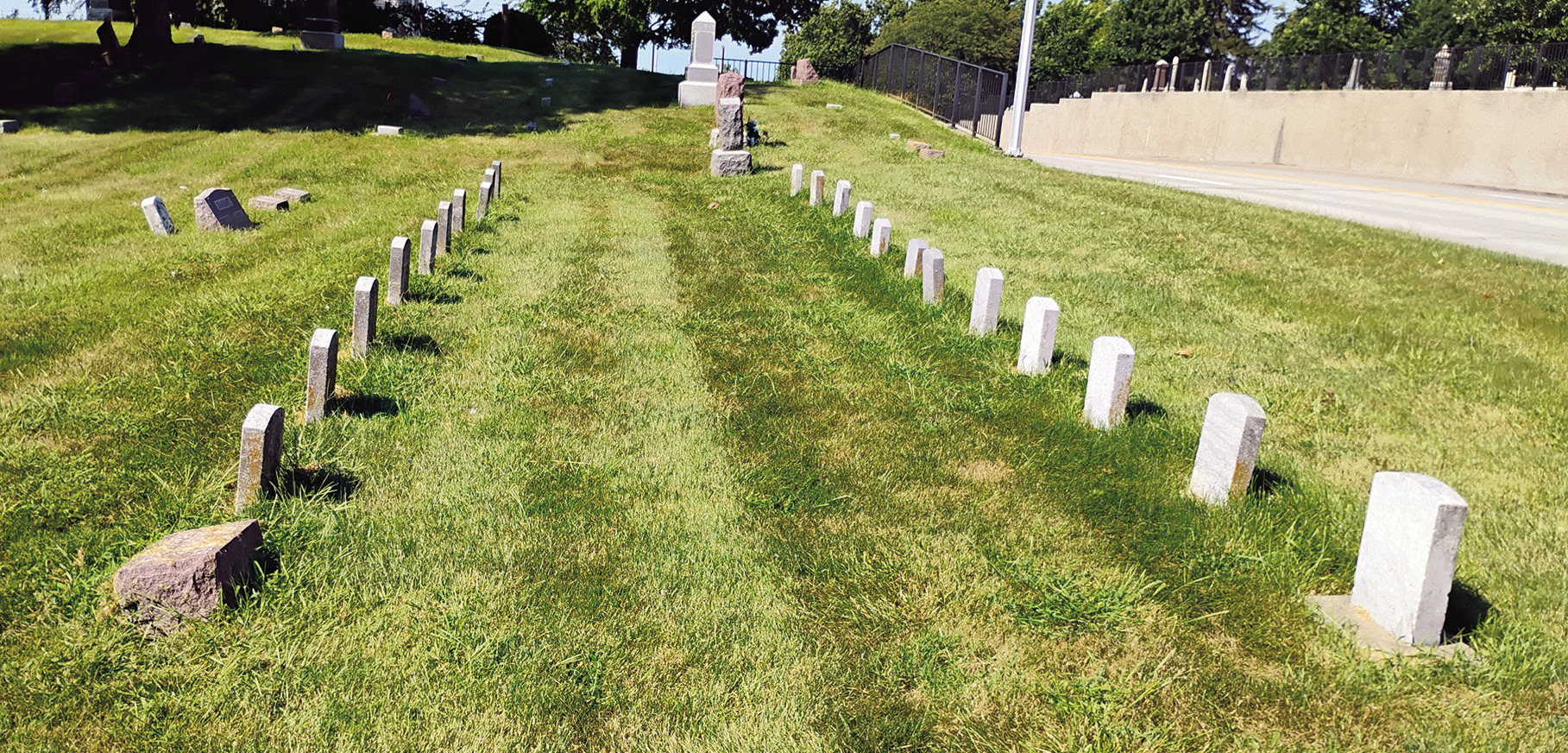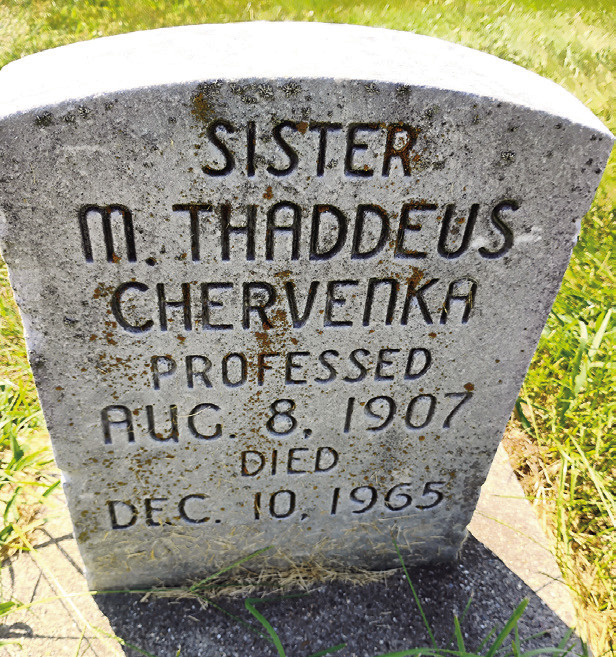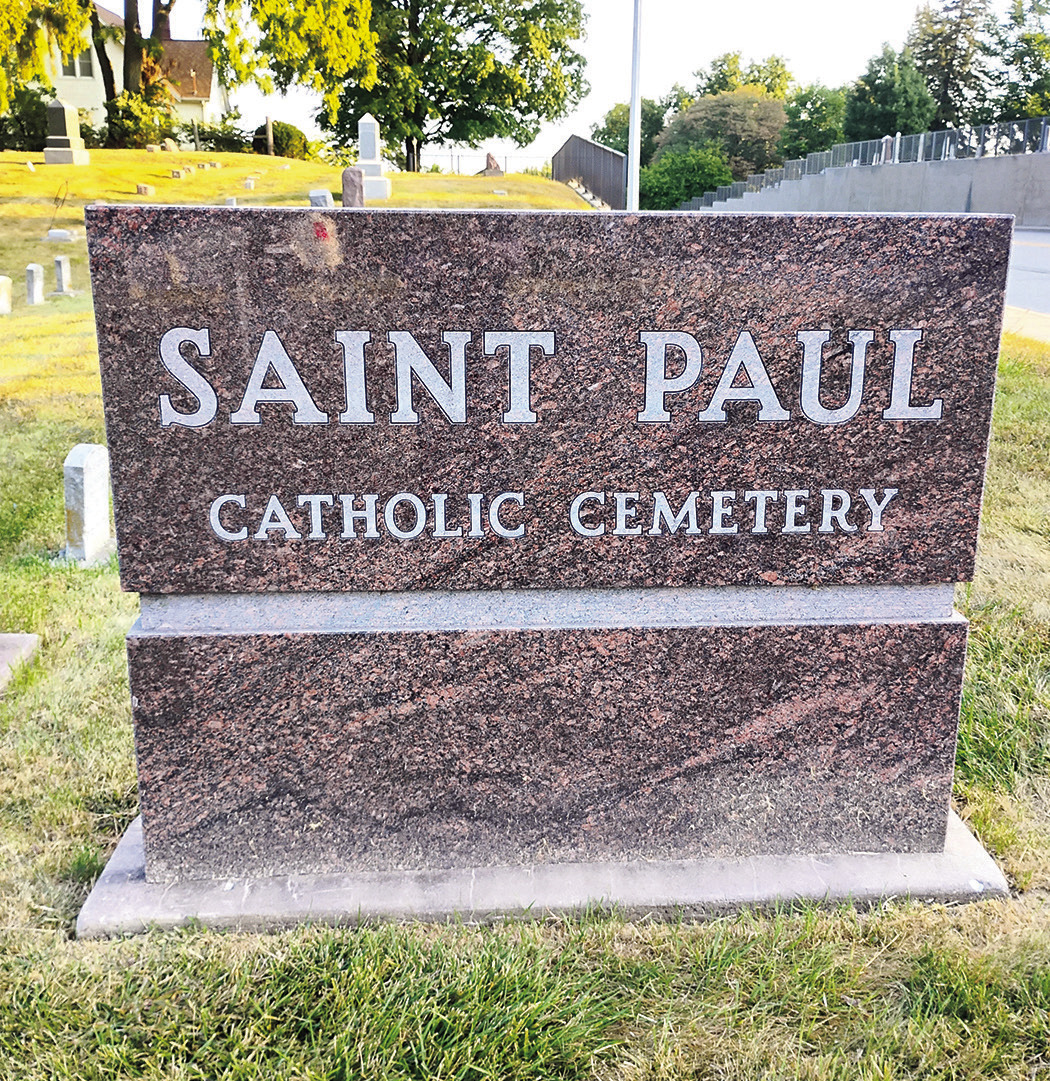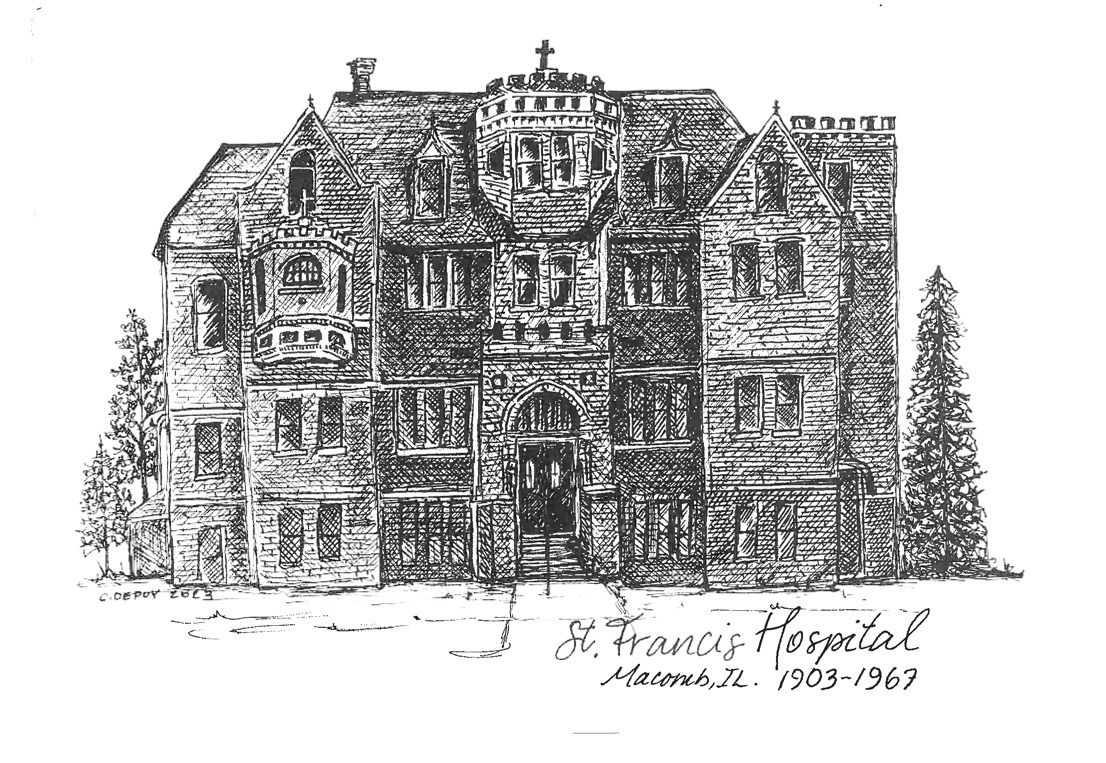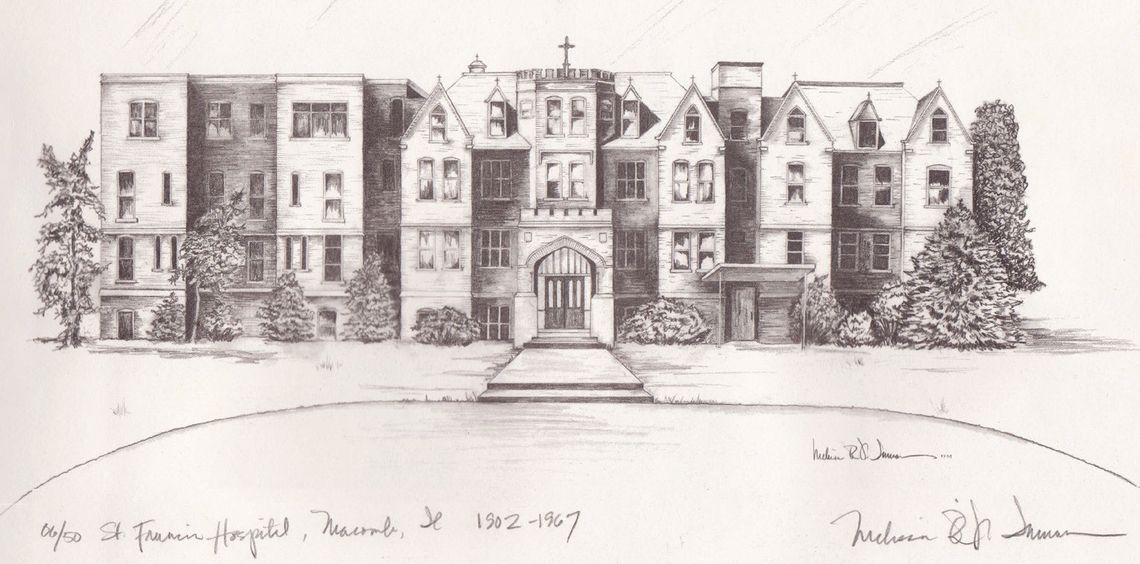The Final Days and Those They Left Behind As mentioned in Part One of this series, by 1949 both Phelps Hospital and St. Francis Hospital were severely overcrowded and faced the possibility of failing to meet federal requirements.
On August 11, 1949, Sister Mary Magdelen of the order of St. Francis in Clinton, Iowa announced plans to construct a new St. Francis Hospital in Macomb. The new St.
Francis Hospital would be a See St. Francis on page 9 five-story, 125 bed structure located just south of the existing building and would cost $1,800,000. Detailed plans were even drawn up by Morgan, Gelatt, and Associates of Burlington, IA.
Fundraising efforts failed and two plans were proposed to the City of Macomb to resolve this hospital problem.
One plan called for the renovation of the existing St. Francis Hospital building and the other for the construction of a new, nondenominational hospital.
Without going into great detail, the community hospital plan proved to be more popular with 6937 votes compared to 2918 for St. Francis. St. Francis officials responded promptly by saying that they would close their doors in 18 months, or May of 1956.
This threw the new community hospital committee into a panic. It would take more than two years to locate land, establish funding, and build the new hospital. They asked if they could pay St. Francis to stay open longer, until the new hospital was ready.
After serving Macomb and the surrounding area for 64 years, and now being told basically that they were being put out of business, St. Francis could have declined and left Macomb high and dry without a hospital (Phelps was also about to close).
The attorney for the sisters of St. Francis, John Daly, of Burlington, released this eloquent statement.
'I suppose there is a feeling by some that they do not want the sisters here. There are many communities who would like to have the sisters start a hospital for them, including one in California that will even give them a hospital to start with. They have been in Macomb for over 60 years because the Bishop wanted them here. The sisters would like to stay in Macomb but they want to run a good hospital. They don't want to run a firetrap hospital. That is the situation. If Macomb wants them, they will stay. If they want the sisters to leave, they can buy the hospital at a fair price.'
Many felt the matter had been decided along religious lines. The Macomb Ministerial Association went on record favoring a community hospital because: 1. It would be non-sectarian 2. The responsibility would be on the community 3. The tax money would not be allocated to any religious organization St. Francis, realizing Macomb would be in a bind without any hospital for a time, graciously stayed open for almost 10 more years, officially closing it's doors on June 30, 1967.
Phelps Hospital had also shut its doors in 1966. McDonough District Hospital had become the sole provider of medical care in the community.
Saying Goodbye
The time finally arrived for the sisters to bid farewell to the community they had faithfully served for 64 years. A reception was held in their honor at St. Thaddius Hall, over 500 people attended. Also in attendance were sisters from Mt. St. Clare and Mt. Alverno in Clinton, Iowa. Sisters from St. Francis Hospital in Grinnell, Iowa and Mercy Hospital in Burlington, Iowa also came to pay their respects.
One can only speculate what the final years and days were like at St. Francis Hospital of Macomb. The packing up of materials accumulated over 64 years, the re-assigning of staff to other hospitals, and the tucking away in their hearts the memories of Macomb, Illinois.
Then there was the other issue. What do you do with the building?
In a news release by Sister Mary Martin, Supervisor General of the Sisters of the Third Order of St. Francis, Clinton, Iowa, she stressed to the Macomb City officials that good use could be put to the Macomb St. Francis compound (12 acres). Her advice, 'A need exists in Macomb for additional residential and long-term facilities especially suited to the requirements of the elderly. A steering committee of local citizens has been formed and is studying the possibility of acquiring the hospital property from the sisters for this purpose.'
Apparently the 'steering' committee decided against purchasing the building. One can only imagine what could have been done with the beautifully designed 'castle-like' St. Francis Hospital building.
Many in Macomb said the old Lamoine Hotel was beyond saving. Look at it today-one of the most beautiful, historical buildings in Macomb. And what is it being used for? Assisted living and memory care. Exactly what sister Mary Martin recommended to Macomb officials all those years ago.
Instead, the southwest corner of W. Grant St. and S. Johnson St. sits serenely quiet today. A neatly groomed Bridgeway home occupies about an acre, and the empty St. Thaddius Hall sits on approximately four acres. The rest appears to have been returned to farmland.
As a representative of the Community News Brief, I had the privilege of speaking with sister Marilyn Huegerich, Vice President of OSF, in Clinton, Iowa and ask her a few questions; Q: Were there hard feelings when St. Francis was basically forced out of Macomb?
A: 'The sisters did not take it personally. It had become a growing trend in the area for cities to close Catholic hospitals and build their own.' Examples of that time include Burlington, Iowa and Grinell, Iowa.
Q: Did the sisters overall like Macomb?
A: 'The sisters absolutely did love Macomb. It became their home.' That is when she added 'That is why they are buried there.' My reply to that was-what do you say? I was shocked.
As it turns out, unbeknownst to me, who grew up here, there are 30 Catholic sisters buried here in Macomb in St. Paul's Cemetery.
I had to ask her one more question which probably displayed my lack of knowledge about her religion.
Q: When a sister died, why didn't they return the body to Clinton, Iowa, from whence they came, for burial?
Sister Huegerichs's reply nearly broke my heart.
A: 'Because we thought we would be in Macomb forever.'
As this concludes the series on Macomb's St. Francis Hospital, it has by far been the most interesting, enjoyable story I have covered to date. The Macomb community made writing this series easy. People came out of the woodwork with photographs, documents, original items from St. Francis, and stories.
Once again I must credit those who have already documented the history of Macomb's medical past: Kathy Nichols, John Hallwas, Alice Krause, Maren Baker, and probably many more; the wonderful WIU archives; the archives of the McDonough Times' and the 'Macomb Daily Journal'. I borrowed much of their work.
I hope everyone enjoyed the series, but I have a plea to the local school teachers in Macomb. Teach more local history. Read these articles to your students. Tell them about the wonderful St. Francis Hospital that once took up the whole 12 acre SW corner of Grant and Johnson, at what I now refer to as the intersection that is known by me as 'a modern marvel of orderly chaos.'
